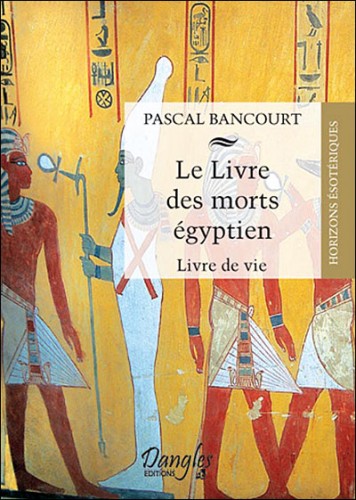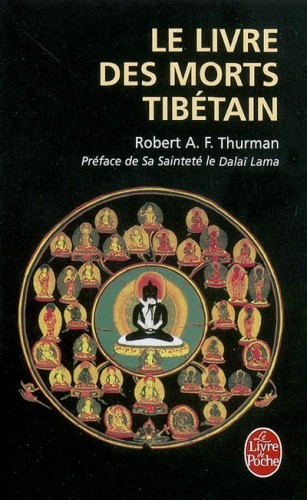Translation anonymous, revised by Greg Johnson
Ex: http://www.counter-currents.com/
Boris De Rachewiltz
Il libro dei Morti degli antichi Egiziani
Milan: All’Insegna del Pesce d’Oro, 1958
 This publication fills a gap long felt by the many students of the history of religions, since previous editions of the Book of the Dead, this most important document of ancient Egypt, have long been unavailable. The works of Lepsius (1842), Naville (1886), Pierret (1882), Sir Peter Le Page Renouf (1904), and Schiaparelli (1881–1890) can only be found in libraries. The only edition reprinted has been the 1953 edition by E. A. Wallis Budge with facsimiles of the papyri.
This publication fills a gap long felt by the many students of the history of religions, since previous editions of the Book of the Dead, this most important document of ancient Egypt, have long been unavailable. The works of Lepsius (1842), Naville (1886), Pierret (1882), Sir Peter Le Page Renouf (1904), and Schiaparelli (1881–1890) can only be found in libraries. The only edition reprinted has been the 1953 edition by E. A. Wallis Budge with facsimiles of the papyri.
Mention should also be made of the G. Kolpaktchy edition published in French and Italian. But it is of little use from the scientific point of view, for the author, animated by the praiseworthy desire to give the inner esoteric sense of many passages of the text has too often been carried away by his imagination, or, worse still, allowed himself to be influenced by dubious ideas taken from modern Theosophy.
The edition and translation by De Rachewiltz—handsomely printed—is based on the Turin papyrus, photographic reproductions of which face the pages of the translation so that any who wish may compare the two. The text is of the Saite Book of the Dead, which is more recent than the Theban version. It was studied and reproduced only by Lepsius, and it is more complete than the Theban version, as it represents the final stage of its development in which the basic themes have been preserved apart from several re-elaborations and additions.
The translation is such that it can serve the purposes of both the specialist and the cultured reader interested in the documents of traditional spirituality. For such readers a little glossary has been added to the translation, which explains the leading themes of the Egyptian mythical-religious world that recur in the text. The translation adheres in the main to the literal meaning of the text, but it does so generally in a way that does not hinder a symbolic or esoteric interpretation, which texts of this kind always allow.
It would be interesting—and would come within the scope of this Review—to draw a comparison between the Egyptian Book of the Dead and the Tibetan, Bardo Thödol, first made known by Evans Wenz and later by Professor Tucci, who used more complete text. The idea common to both is that after death the soul still has the ability to take actions on which its fate will depend. It can, in a certain way, overcome destiny, modifying the course it would otherwise follow. To express it in oriental terms, it may be said that it has the power of suspending the effects of the karma.
It should however be noted that this does not refer to just any kind of soul. The Tibetan text shows that the soul is always that of a person who had already travelled part of the way to liberation during his life.
In the case of the Egyptian text, De Rachewiltz points out that it became the Book of the Dead in general only through a process of “democratization,” for in the ancient Empire it had been reserved exclusively to members of the Royal House and of the high priesthood. Indeed, originally the so-called “Osirification” was reserved for them only, and only to them was attributed the ka, the “double,” destined to make way for the sahu, the immortal body that “stands up,” that “does not fall.”
The real title of the Egyptian text is The Book to Lead out to the Day. The real meaning of this expression, imperfectly understood by several translators, alludes to the supreme purpose: to go out into the day means to go out into the immortal light, the invisible light of Amenti. In the Tibetan ritual, as is known, the meeting with absolute light is the first experience and the first test the soul of the dead encounters. An essential part of the Egyptian ritual is overcoming “the second death,” that is to say the disintegration of the spiritual and psychic nucleus detached from the body by the first death (the death of the physical organism). In this connection the motive of an existential danger, of a fundamental risk encountered in the beyond, often acquires highly dramatic features in the Egyptian text. At the same time, the Egyptian text attributes more importance to behavior of a magic and determinative character than does the Tibetan, which accentuates rather the importance and power of knowledge.
 Nevertheless, there are many parallel points between the two texts dealing with the liberating identifications. Just as in the Tibetan ritual the destruction of the appearance of distinct entities, which all things perceived in the experiences of the other world may acquire, is indicated as a means of liberation, so in the Egyptian text formulae are repeated by means of which the soul of the dead affirms and realizes its identity with the divine figures.
Nevertheless, there are many parallel points between the two texts dealing with the liberating identifications. Just as in the Tibetan ritual the destruction of the appearance of distinct entities, which all things perceived in the experiences of the other world may acquire, is indicated as a means of liberation, so in the Egyptian text formulae are repeated by means of which the soul of the dead affirms and realizes its identity with the divine figures.
In addition to these, there are the formulas for “transformation.” The soul acquires the capacity of making itself manifest in the form of one or other of the cosmic powers, which in the text are made to correspond mostly to the symbolic theriomorphic figures. It is only through a misinterpretation of these references that some have been led to suppose that the doctrine of reincarnation was part of the ancient esoteric teachings of the Egyptians.
Unfortunately, the Egyptian text as it has come down to us is not systematic in character. The formulas are often presented miscellaneously. Apart from spurious features of a folkloric character, the positions taken fluctuate frequently. There are spiritual ups and downs, inner shortcomings, invocations of a religious and mystical nature.
Yet spite of all this, the prevailing character of the most ancient, clear, and essential portions of the text is most certainly inspired by magic. The soul humbles itself so little in the presence of the ultramundane divinities that it sometimes threatens them with destruction. This is the case even with Osiris and Ra, with reference to the principle of a kind of “transcendent virility.” The soul even asserts a substantial metaphysical connection between itself and the divine essences, sometimes even declaring that its salvation is also theirs. The “opening of the mouth,” by which is meant the reacquisition of the magic power of the word, which can render the formulas efficient and irresistible, “breathing the breath of life,” thus becoming a Living Being, having power over the Waters, taking a Name which does not die, these are the most luminous themes in the vicissitudes of the other world.
The Egyptian text was recited at funerals, as the Tibetan Bardo Thödol was read to the dying and even after their death. In either case the purpose was to help the soul not to forget, to stand up and remain active. De Rachewiltz, moreover, rightly calls attention to the fact that several passages suggest that the Egyptian formulas were used also during life and were held to be useful to the living, so one may recognize in the text the character of a magic ritual in the proper meaning of the words. This may indeed apply not only to some special formulas but to the text as a whole if it be referred to the rites of initiation, for it was unanimously believed in the ancient world that the experiences of initiation corresponded to those of life beyond the grave and that therefore the proceedings required in either case to overcome the “second death” and reach “Osirification” were the same.
In calling attention to this new publication, we would again point out that it makes an important contribution also to those who wish to make a comparative study of Oriental and Western traditions which, in a certain sense, find a connecting link in the traditions of ancient Egypt.
East and West, vol. 10, nos. 1 and 2 (March–June 1959): 126–27.




 del.icio.us
del.icio.us
 Digg
Digg